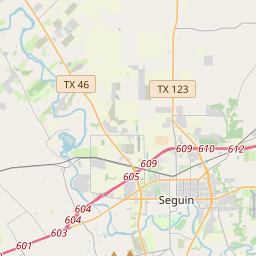Henry Troell
Historical marker location:






(October 5, 1838 - December 19, 1921)
A native of Wichmannshausen, Germany, Henry Troell moved to this area sometime prior to 1860. He served in the Confederate Army and in 1872 married area native Johanna Woehler. A successful freighting business enabled him to invest in several local properties and enterprises, including an innovative dam/grist mill operation at this site. He expanded the mill's water and hydroelectric generation capabilities and in the 1890s provided the city its first water and electric utility systems. His entrepreneurial and business legacy represent an important part of the city's development. (1994)
April 12, 1861: The Civil War begins with the Confederate attack on Fort Sumter, located in South Carolina's Charleston Harbor.
April 15, 1861: President Abraham Lincoln issues a call for 75,000 volunteers to serve in the Union Army to suppress the rebellion.
May 24, 1861: The first major land battle, known as the First Battle of Bull Run (or First Battle of Manassas), takes place in Virginia. It ends in Confederate victory.
September 17, 1862: The Battle of Antietam in Maryland becomes the bloodiest single-day battle in American history, with heavy casualties on both sides. The Union forces, commanded by General George McClellan, manage to halt Confederate General Robert E. Lee's advance into Union territory.
January 1, 1863: President Lincoln issues the Emancipation Proclamation, declaring that all slaves in Confederate-held territories are to be set free. However, the proclamation does not immediately free all slaves in the United States.
July 1-3, 1863: The Battle of Gettysburg in Pennsylvania takes place, resulting in a significant Union victory and inflicting heavy casualties on Confederate forces. It marks a turning point in the war.
November 19, 1863: President Lincoln delivers the Gettysburg Address, emphasizing the principles of liberty, equality, and the preservation of the Union.
April 9, 1865: General Robert E. Lee surrenders to Union General Ulysses S. Grant at Appomattox Court House in Virginia, effectively ending the Civil War.
April 14, 1865: President Lincoln is assassinated by John Wilkes Booth while attending a play at Ford's Theatre in Washington, D.C.
May 10, 1865: Confederate President Jefferson Davis is captured, signaling the collapse of the Confederate government.
December 6, 1865: The Thirteenth Amendment to the United States Constitution is ratified, officially abolishing slavery throughout the country.
While this timeline provides an overview of key events, it is important to note that the Civil War spanned over four years, from 1861 to 1865, and encompassed numerous battles, campaigns, and political developments that shaped the course of American history.
As one of the most visible programs of the Texas Historical Commission (THC), historical markers commemorate diverse topics in Texas history, including: the history and architecture of houses, commercial and public buildings, religious congregations, and military sites; events that changed the course of local and state history; and individuals who have made lasting contributions to the state, community organizations, and businesses.
The University of Texas at Austin, founded in 1883, is one of the largest universities in the United States and has produced many notable alumni, including several U.S. presidents.
The area came under Spanish rule in the 18th century when Spanish explorers and missionaries arrived. In 1756, the Spanish established the Mission Nuestra Señora de Guadalupe de los Nacogdoches near present-day Seguin, marking the beginning of European settlement in the area. The mission was intended to convert and provide shelter for Native Americans, but it was eventually abandoned due to conflicts with local tribes.
During the turbulent years of the 19th century, Guadalupe County witnessed significant changes. In 1836, the Battle of the Alamo and the Texas Revolution prompted a wave of Anglo-American settlers to move into the area. The county was officially established in 1846, and soon after, it became an important center for agriculture, particularly cotton production.
The county's growth continued during the late 19th and early 20th centuries. The arrival of the railroad in the 1870s brought increased economic opportunities and facilitated trade with other regions of the state. By the early 20th century, Guadalupe County had a thriving economy with industries such as agriculture, oil and gas, and manufacturing.
Today, Guadalupe County retains its agricultural heritage while also being home to a diverse mix of industries and communities. It offers a unique blend of rural charm, natural beauty, and a growing suburban area. With its rich historical background and vibrant present, Guadalupe County remains an essential part of the Lone Star State.
Guadalupe County Timeline
This timeline provides a condensed summary of the historical journey of Guadalupe County, Texas.
- 1838: Guadalupe County is established as a county in the Republic of Texas.
- 1846: Guadalupe County becomes a part of the state of Texas after Texas is annexed by the United States.
- 1848: The county seat of Guadalupe County is established in Seguin.
- 1861-1865: Guadalupe County is greatly affected by the American Civil War.
- 1876: The courthouse in Seguin is destroyed by fire but is rebuilt the following year.
- Late 1800s: The county experiences significant growth with the introduction of the railroad and the development of agriculture and industry.
- Early 1900s: Guadalupe County experiences further growth with the discovery of oil and gas in the area.
- 1930s-1940s: Guadalupe County suffers from the effects of the Great Depression and World War II.
- 1960s-1970s: The county experiences growth and development with the construction of Interstate 10 and the expansion of the petrochemical industry.
- 2000s: Guadalupe County continues to grow and attract new residents and businesses.